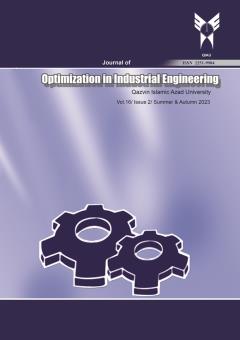Designing and Building of E-Learning Applications For SMK Negeri 1 Gunung Talang
محورهای موضوعی : Design of Experiment
Asrul Huda
1
![]() ,
Suci Rahmadani
2
,
Dedy Irfan
3
,
Bayu Fajri
4
,
Murni Sukmawati
5
,
Noper Ardi
6
,
Suci Rahmadani
2
,
Dedy Irfan
3
,
Bayu Fajri
4
,
Murni Sukmawati
5
,
Noper Ardi
6
1 - Digital Learning Research Center, Universitas Negeri Padang, Padang 25112, Indonesia
2 - Digital Learning Research Center, Universitas Negeri Padang, Padang 25112, Indonesia
3 - Digital Learning Research Center, Universitas Negeri Padang, Padang 25112, Indonesia
4 - Digital Learning Research Center, Universitas Negeri Padang, Padang 25112, Indonesia
5 - Digital Learning Research Center, Universitas Negeri Padang, Padang 25112, Indonesia
6 - Department of Informatic Engineering, Politeknik Negeri Batam, Batam 29464, Indonesia
کلید واژه: application, flipped classroom, Moodle, SMK N 1 Guntal,
چکیده مقاله :
In this research, the design and manufacture of an e-learning learning system application at SMK N 1 Guntal was carried out using Moodle (Modular Object Oriented Dynamic Learning Environment), a software developed for internet and web-based learning activities that can create and manage courses, check student attendance and performance, managing quizzes or other assignments. This application is designed and created using the flipped classroom learning model or reverse learning where students before doing learning in class students first study the material at home according to the learning given by the teacher. By making e-learning media with this flipped classroom learning model, students can deepen the material provided by the teacher and increase creativity and train student independence. In addition, the application of this learning model certainly requires training and readiness of teachers, educational staff in designing learning materials before having face-to-face meetings in class. By learning using this e-learning application, it is hoped that conventional learning patterns can be improved or improved into learning that is in accordance with the development of the digital era as it is today.
In this research, the design and manufacture of an e-learning learning system application at SMK N 1 Guntal was carried out using Moodle (Modular Object Oriented Dynamic Learning Environment), a software developed for internet and web-based learning activities that can create and manage courses, check student attendance and performance, managing quizzes or other assignments. This application is designed and created using the flipped classroom learning model or reverse learning where students before doing learning in class students first study the material at home according to the learning given by the teacher. By making e-learning media with this flipped classroom learning model, students can deepen the material provided by the teacher and increase creativity and train student independence. In addition, the application of this learning model certainly requires training and readiness of teachers, educational staff in designing learning materials before having face-to-face meetings in class. By learning using this e-learning application, it is hoped that conventional learning patterns can be improved or improved into learning that is in accordance with the development of the digital era as it is today.
Abdul, Kadir, & Triwahyuni T. (2013). Pengantar Teknologi Informasi Edisi Revisi. Andi.
Andri, K. (2018). Perancangan Sistem Informasi Dan Aplikasinya. Gava Media.
Bantala, A. P. (2010). Penerapan Pembelajaran E-learning (Learning Management System) Untuk Meningkatkan Kemampuan Kognitif Peserta Diklat Teknik Jaringan Komputer Dasar Di Pppptk Bmti Bandung. Tesis Jurusan Pendidikan Teknologi dan Kejuruan UPI.
Davis, G. B. (1995). Sistem Informasi Manajemen. Penerbit Andi Ofset.
Hartono, B. (2013). Sistem Informasi Manajemen Berbasis Komputer. Rineka Cipta.
Huda, A., Azhar, N., Almasri, A., Wulansari, R. E., Mubai, A., Sakti, R. H., Firdaus, F., & Hartanto, S. (2021). Augmented Reality Technology as a Complement on Graphic Design to Face Revolution Industry 4.0 Learning and Competence: The Development and Validity. International Journal of Interactive Mobile Technologies, 15(5), 116–126. https://doi.org/10.3991/ijim.v15i05.20905
Huda, A., Azhar, N., Almasri, Anshari, K., & Hartanto, S. (2020). Practicality and effectiveness test of graphic design learning media based on android. International Journal of Interactive Mobile Technologies, 14(4), 192–203. https://doi.org/10.3991/IJIM.V14I04.12737
Huda, A., & Ardi, N. (2021). Predictive Analytic on Human Resource Department Data Based on Uncertain Numeric Features Classification. International Journal of Interactive Mobile Technologies (iJIM), 15(08), 172–181. https://doi.org/10.3991/ijim.v15i08.20907
Indrajani. (2011). Perancangan Basis Data Dalam All In 1. PT. Elex Media Komputindo.
Kole, V. (2021). Jurnal Sosial dan Teknologi (SOSTECH) Implementasi Penjualan Makanan Secara Online dengan e-ISSN 2774-5155 Metode DevOps pada Restaurant Zenbu House Jakarta p-ISSN 2774-5147 Barat Verdianus Kole, 1(8), 876–883.
Nurkhalik, R. D., & Syaichudin, M. (2014). Pengembangan Bahan Ajar Berbasis Moodle Tentang Troubleshooting Hardware Laptop Bagi Peserta Diklat Di Mandiri Entrepreneur Centre Surabaya. Mahasiswa Teknologi Pendidikan, 5(1), 1–12. https://jurnalmahasiswa.unesa.ac.id/index.php/jmtp/article/view/10386
Pitra, H. (n.d.). 242-538-2-Pb. 54–58. https://agus-hermanto.com/blog/detail/metode-pengembangan-devops diakses pada tanggal 9 November 2022.
Puspitasari, D. (2015). Jurnal Tugas Akhir “Pengembangan e-learning pada mata pelajaran simulasi digital paket keahlian teknik mekatronika di SMK". Universitas Negeri Yogyakarta.
Rohmah, L. (2011). Konsep E-Learning Dan Aplikasinya Pada Lembaga Pendidikan Islam. Jurnal An Nûr, 1(1),255–270.
Rulianto, K. (2009). Membangun Media Ajar Online Untuk Orang Awam. Maxikom.
Susanto, A (2019). Rancang Bangun Aplikasi E-Learning pada SMK Kesehatan Rahani Husada Madiun Berbasis Website. Seminar Nasional Teknologi Informasi dan Komunikasi, 211–216.
Windyasari, V. S., & Qoiriyah, W. (2020). Rancangan Sistem E-Learning Mahasiswa Fakultas Teknik Universitas Islam Syekh Yusuf Tangerang. Unistek, 7(2),40–49. https://doi.org/10.33592/unistek.v7i2.708


